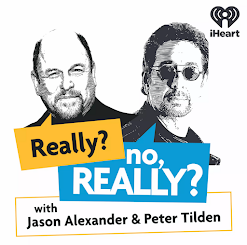Monday, 26 April 2010
I'm still a bit rubbish at stats
I seem to suffer from a bit of a mental block with statistics, despite being a fan of Ben Goldacre, reading around the subject and attending classes on it. For some reason even though I can grasp it when I am in the middle of learning it, the knowledge seeps out at an alarming rate. I more or less have to start from scratch whenever I meet a new article.
Hopeless. But let's remember all the other things I'm good at :) Peculiarly I managed to get a first in statistics at university (though this was a modular exam at first year level and open book at that) but have really let the side down since then.
Abstracts don't help, writing things in a very paragraphy sort of way when what I really need is to see things written out line by line...
Effect of Valsartan on the Incidence of Diabetes and Cardiovascular Events
http://content.nejm.org/cgi/content/abstract/362/16/1477
Results The cumulative incidence of diabetes was 33.1% in the valsartan group, as compared with 36.8% in the placebo group (hazard ratio in the valsartan group, 0.86; 95% confidence interval [CI], 0.80 to 0.92; P (less than) 0.001).> placebo, did not significantly reduce the incidence of either the extended cardiovascular outcome (14.5% vs. 14.8%; hazard ratio, 0.96; 95% CI, 0.86 to 1.07; P=0.43) or the core cardiovascular outcome (8.1% vs. 8.1%; hazard ratio, 0.99; 95% CI, 0.86 to 1.14; P=0.85).
But what I need is something more like this:
Results
The cumulative incidence of diabetes was 33.1% in the valsartan group,
as compared with 36.8% in the placebo group
(hazard ratio in the valsartan group, 0.86;
95% confidence interval [CI], 0.80 to 0.92;
P<0.001). p="0.43)" p="0.85).
Conclusions Among patients with impaired glucose tolerance and cardiovascular disease or risk factors, the use of valsartan for 5 years, along with lifestyle modification, led to a relative reduction of 14% in the incidence of diabetes but did not reduce the rate of cardiovascular events. (ClinicalTrials.gov number, NCT00097786 [ClinicalTrials.gov].)
Actually that still doesn't help very much, I'm still a bit at sea. At this point I try applying mathematical functions to some of the available figures (basically dividing one number by another) to see if I get anywhere. I'm vaguely cheered to have spotted that 0.96 might be related to 14%...
If it's any help, I'm useless at reading maps too though I am very good at writing instructions - and delighted to hear that Mark Miodownik's lovely programme "How to write an instruction manual" has been uploaded to the @Speechification vault.
Is there an online journal club for remedial stats?
Hopeless. But let's remember all the other things I'm good at :) Peculiarly I managed to get a first in statistics at university (though this was a modular exam at first year level and open book at that) but have really let the side down since then.
Abstracts don't help, writing things in a very paragraphy sort of way when what I really need is to see things written out line by line...
Effect of Valsartan on the Incidence of Diabetes and Cardiovascular Events
http://content.nejm.org/cgi/content/abstract/362/16/1477
Results The cumulative incidence of diabetes was 33.1% in the valsartan group, as compared with 36.8% in the placebo group (hazard ratio in the valsartan group, 0.86; 95% confidence interval [CI], 0.80 to 0.92; P (less than) 0.001).> placebo, did not significantly reduce the incidence of either the extended cardiovascular outcome (14.5% vs. 14.8%; hazard ratio, 0.96; 95% CI, 0.86 to 1.07; P=0.43) or the core cardiovascular outcome (8.1% vs. 8.1%; hazard ratio, 0.99; 95% CI, 0.86 to 1.14; P=0.85).
But what I need is something more like this:
Results
The cumulative incidence of diabetes was 33.1% in the valsartan group,
as compared with 36.8% in the placebo group
(hazard ratio in the valsartan group, 0.86;
95% confidence interval [CI], 0.80 to 0.92;
P<0.001). p="0.43)" p="0.85).
Conclusions Among patients with impaired glucose tolerance and cardiovascular disease or risk factors, the use of valsartan for 5 years, along with lifestyle modification, led to a relative reduction of 14% in the incidence of diabetes but did not reduce the rate of cardiovascular events. (ClinicalTrials.gov number, NCT00097786 [ClinicalTrials.gov].)
Actually that still doesn't help very much, I'm still a bit at sea. At this point I try applying mathematical functions to some of the available figures (basically dividing one number by another) to see if I get anywhere. I'm vaguely cheered to have spotted that 0.96 might be related to 14%...
If it's any help, I'm useless at reading maps too though I am very good at writing instructions - and delighted to hear that Mark Miodownik's lovely programme "How to write an instruction manual" has been uploaded to the @Speechification vault.
Is there an online journal club for remedial stats?
1 comment:
Comment policy: I enthusiastically welcome corrections and I entertain polite disagreement ;) Because of the nature of this blog it attracts a LOT - 5 a day at the moment - of spam comments (I write about spam practices,misleading marketing and unevidenced quackery) and so I'm more likely to post a pasted version of your comment, removing any hyperlinks.
Comments written in ALL CAPS LOCK will be deleted and I won't publish any pro-homeopathy comments, that ship has sailed I'm afraid (it's nonsense).
Subscribe to:
Post Comments (Atom)





I do of course mean that 0.86 might be related to 14%.
ReplyDeleteBut it might as well have been 0.96 for all the difference it will make to my competence in this particular area. Shame it's so bloomin' important...